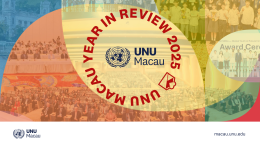In the current development paradigm and especially over the last two decades, a focus on sustainable development has led to increased international cooperation regarding efforts to safeguard our collective future. Earlier this week, we saw the Global Digital Compact (GDC) - a comprehensive framework for global governance of digital technology - adopted under the Pact for the Future. Each of the commitments emphasized in the Compact is associated with at least one of the Sustainable Development Goals (SDGs). One of the objectives of the GDC is to ‘close all digital divides and accelerate progress across the SDGs’.
What is the digital divide?
As defined in the UN Human Settlements Programme’s 2021 ‘Addressing the Digital Divide’ publication:
“The digital divide is the gap between those who have access to and use ICTs including internet connectivity, internet-enabled devices and digital literacy skills and those who do not.”
Conversations around this theme were already evident following the adoption of the UN Millennium Declaration:
“The so-called digital divide was actually several gaps in one, with a technological divide, a content divide, a gender divide, and a commercial divide. And there were obvious social, economic and other disparities and obstacles that could affect a country’s ability to take advantage of digital opportunities. It should not be assumed that such gaps would disappear on their own, over time, as the diffusion of technology naturally spread its wealth. An open, inclusive information society that benefited all people would not emerge without sustained commitment and investment.”
Kofi Annan, former UN Secretary-General (2003)
More recently, in 2020 the current UN Secretary-General António Guterres stated: “Looking to the future, two seismic shifts will shape the 21st century: the climate crisis, and digital transformation.”
Going forward, the GDC has a crucial role to play in the governance of technology because closing the digital divide goes far beyond universal connectivity, inclusion, and safety. Some of the goals of the GDC also deal with digital spaces, inclusion in the digital economy and promoting human rights. The rapid pace of technological change has deepened apprehensions: experts question whether the course of change poses a risk to humanity and there are especially strong concerns about the international governance of artificial intelligence (AI) and data. Addressing AI and data governance are distinct goals within the GDC, two themes which have gained prominence in the past decade.
Challenges in digital governance
The interaction between people, institutions, governance, and technology makes digital transformation and virtual spaces inherently complex. Let us take the example of digital spaces which promote digital economies of knowledge acquisition, socialisation and commercial transactions - much like public spaces. However, unlike public spheres, governing digital spaces is an enormous challenge. Firstly, consider the wide range of actors accountable for regulating these spheres to ensure that they are accessible, inclusive, and free from harm. Secondly, unlike public spaces which are tangible, many of our online interactions are invisible – one concern with the advent of artifical intelligence is how algorithms operate, the inherent biases present in these algorithms and users’ awareness of such algorithms. Other invisible aspects of our online interactions involve the content which is behind enclosures, such as the deep web - the largest layer of the internet, it contains web pages that are not indexed by search engines, lie behind paywalls or are encrypted. (There is also a small segment of the deep web known as the dark web which is often exploited for illicit purposes.) Finally, inequities in access and meaningful use are not easily observed, neither is the impact of digital technology, making it challenging to learn about how digital spaces influence the lives of people and institutions. Together, these aspects result in an imposing enigma when it comes to the governance of digital media and spaces.
The GDC recognises the multi-stakeholder nature of internet governance and emphasises the role of non-state actors in meeting the 2030 agenda and in the governance of virtual spaces. Objective 3 of the Compact refers specifically to the governance of these spaces to “uphold international human rights law throughout the life cycle of digital and emerging technologies so that users can safely benefit from digital technologies and are protected from violations, abuses and all forms of discrimination. "Recognize the responsibilities of all stakeholders in this endeavour and also call on the private sector to apply the United Nations Guiding Principles on Business and Human Rights”. This objective calls upon private actors such as developers, companies and platforms to respect international human rights, conduct impact assessments and take measures to mitigate technology-facilitated abuses.
Gender-related aspects
The role of platforms in trust and safety is emphasised in the commitments of the Compact, an issue which especially affects women and children. Not only is placing ‘women and girls at the centre’ a key priority, but gender mainstreaming is highlighted throughout the Summit of the Future’s priorities. Addressing gender-related risks as well as barriers is one of the GDC’s goals. What are these barriers and risks? The short answer is that while there are specific barriers and risks that influence women’s and girls’ relationship with digital technology generally, they can differ from one context to another. The long answer deals with the question of how context matters, i.e., how are these barriers and risks distinct for a given setting? One way to analyse the issue is through a vulnerability lens. Often, these vulnerabilities (when considered from a socio-technical perspective) are not only overlapping, but interconnected. There are also other considerations emerging from both the demand and supply sides, and analysing these intersections can offer several insights towards effective digital inclusion.
Ensuring the success of these priorities involves a careful assessment of the situation for girls and women, and research can serve as an avenue towards understanding how women and girls can best be empowered in our digital future. My PhD research deals primarily with the use of technology and gender norms, and online gender-based violence in the Global South. I examine if and how digital media technologies empower women and girls, and also how digital social movements impact gender-based violence online. My research is an attempt to causally affirm the many ways in which technology impacts the rights of girls and women. The impact of social media platforms on girls’ rights is encouraging, but unfortunately these same platforms may nurture both harmful language and regressive sentiments against women, as well as online abuse. This research especially agrees with the emphasis in the Compact on the role of platforms in promoting trust and safety, advancing gender equality, and eliminating all forms of violence.
To learn more about this topic, apply to UNU-MERIT's online ITU Academy course 'Causes and consequences of the digital divide' before 1 October 2024. Designed especially for practitioners, government officials and policymakers from developing countries, the course features Praachi Kumar as one of the instructors. (Thanks to generous funding from the EU’s Global Gateway initiative, this course is free of charge for the selected participants.)
Suggested citation: Kumar Praachi., "Examining the Causes and Consequences of the Digital Divide(s)," UNU-MERIT (blog), 2024-09-27, 2024, https://unu.edu/merit/blog-post/examining-causes-and-consequences-digital-divides.


